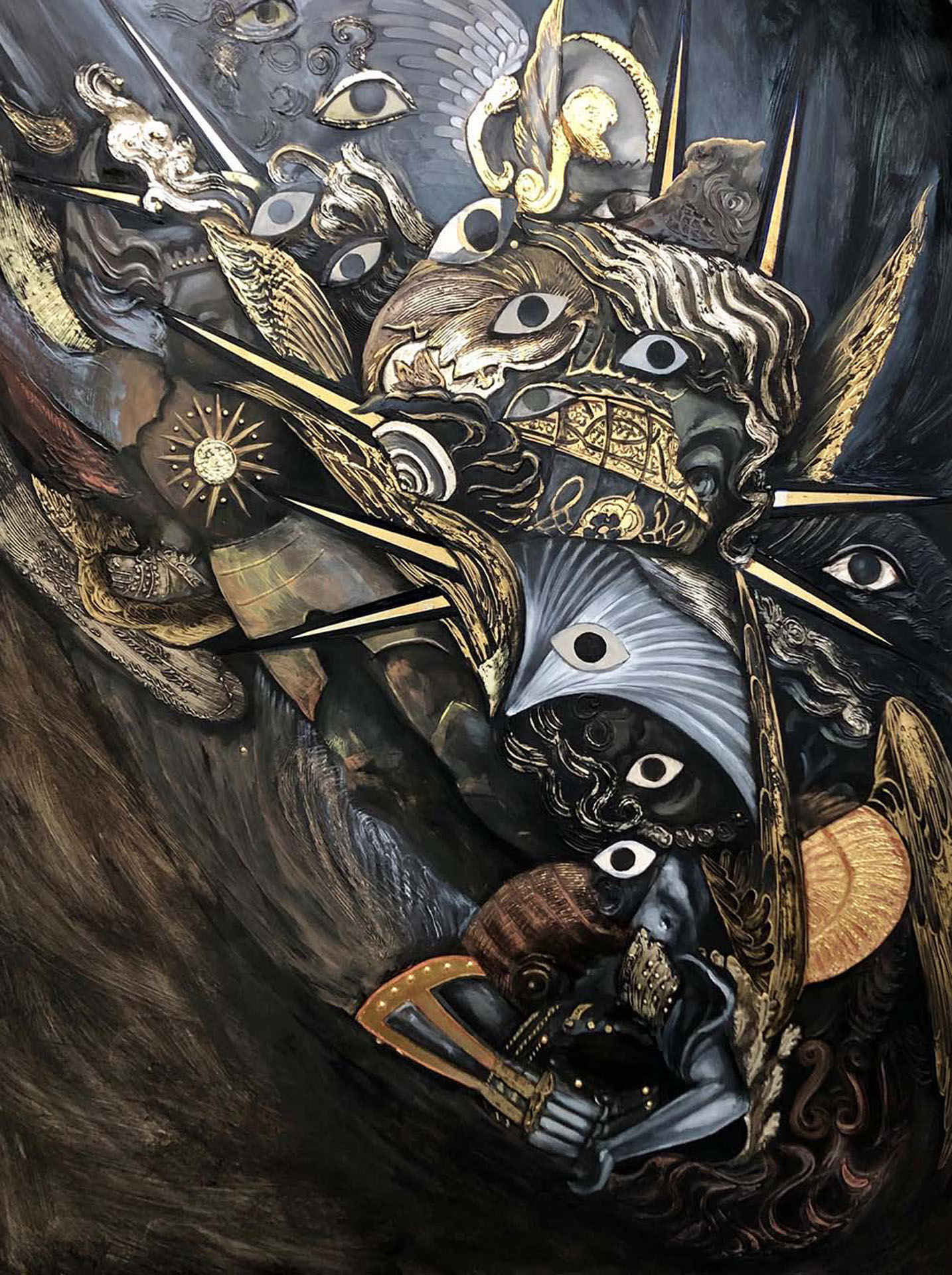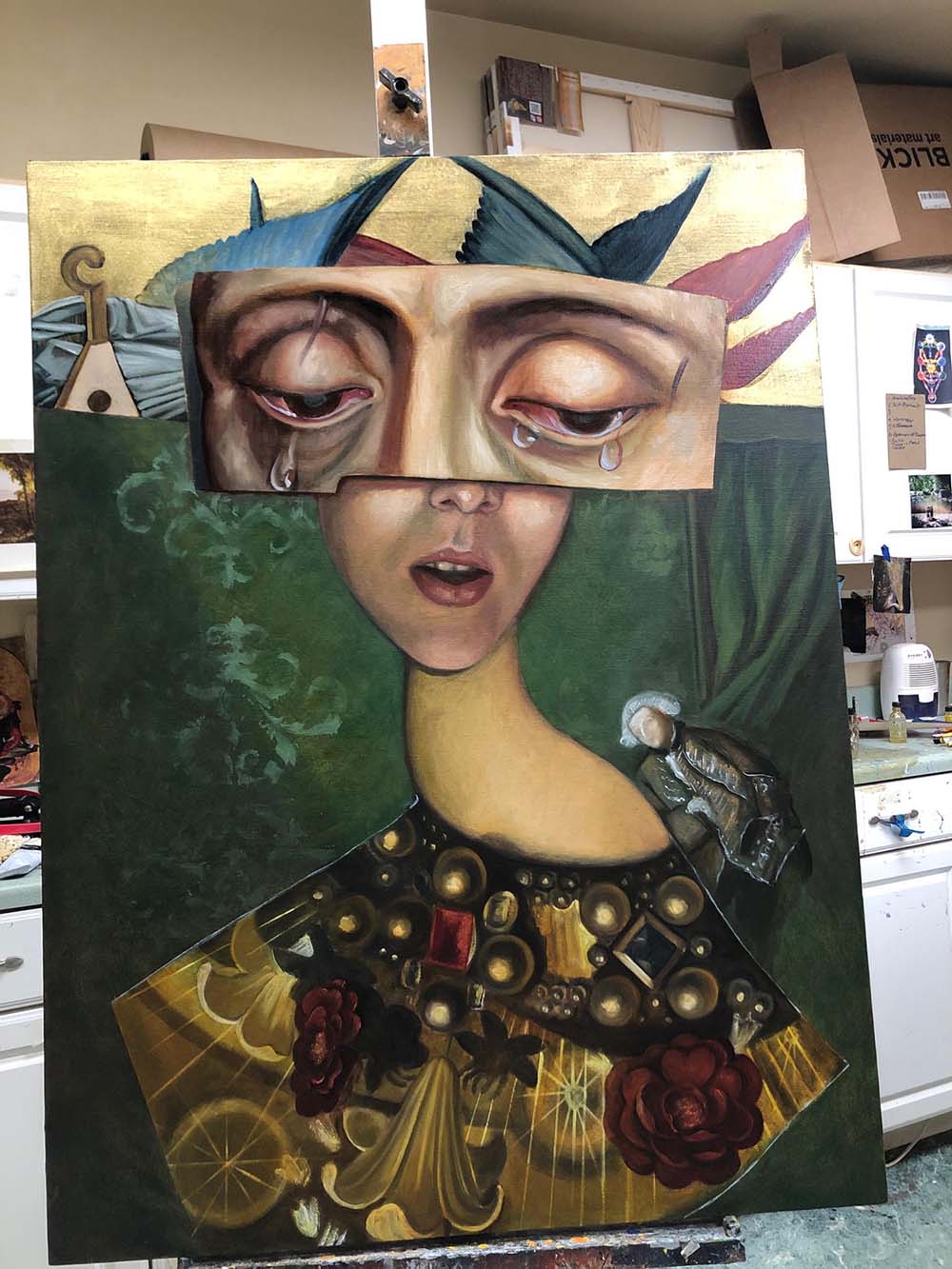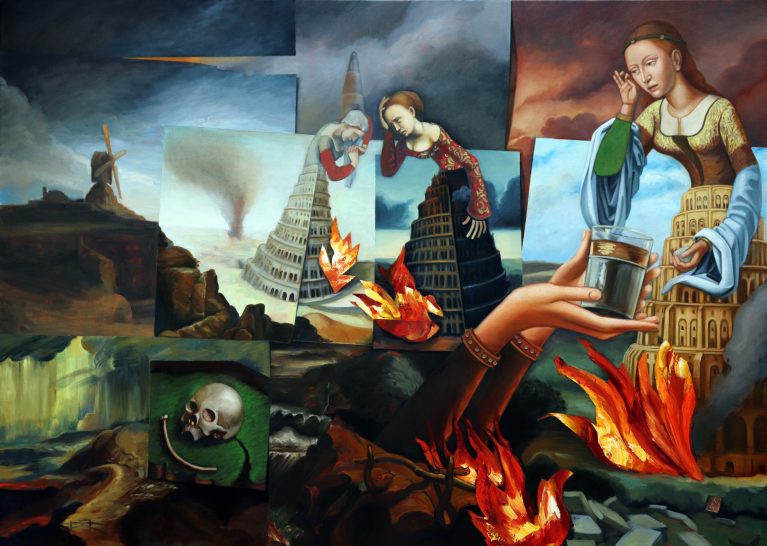
B20 Artist Interview with Carrie Ann Baade
B20: Wiregrass Biennial is a juried exhibition that encourages innovative and progressive work and showcases the South’s most talented contemporary artists, illustrating the region’s rich cultural heritage. Selected work utilizes a variety of art forms and media, including paintings, sculptures, mixed media, new media, and installation art. Three jurors chose from a field of over 130 entries for this year’s exhibition — the first virtual exhibition ever for WMA — featuring 39 artists from 11 states.
We’ll be sharing a series of interviews with B20 artists during the run of the exhibition, and our fourth is from Havana, Florida-based artist Carrie Ann Baade.

Carrie Ann Baade, “Self-portrait,” 2020, Oil on canvas
Where do you find inspiration for your artistic practice?
For the past twenty years, I have found much inspiration from art history. My paintings are reflections on morality, politics and my individual quest for self- expression. Part of this process it cutting up art history and making my own statements with it much like a little girl might play with paper dolls.
Tell us about the piece, Manufacturing of Tears, featured in the biennial. What are you trying to convey with this painting?
The title for this painting is from the Devil in the White City, a book about a murderer who destroyed women during the chaos surrounding the Chicago’s 1893 World Fair. The image of “manufacturing of tears” fit well with the imagery I had been collecting of towers of babel connected to crying Mary Magdalenes. I was interested in placing these Babel-Magdalenes so that they covered the landscape, each unable to move.
In creating the collage, the windmill was surreptitiously appeared…and it became apparent that is was there to blow debris into the Magdalene’s eyes and cause them to cry. In the process of collage, there are happy accidents that astound me. Next, I needed to figure out why they must cry and in my mind’s eye, I saw these structures all aflame. I realized that they were not merely sad but that they had to cry from danger of their own peril. For this reason, one is holding an onion…so as to produce more tears.
“Each woman must cry and contribute her tears to a communal glass. By working together, perhaps one day they will produce enough tears to put out one fire and spare the one who is closest to immediate danger. To stop participating results in death.”
My paintings function as allegories and this one I think is as a metaphor for work and contributing to something like social security.

Carrie Ann Baade, “Manufacturing of Tears,” 2018, Oil on linen
What is your process for creating new work? Where do you start?
My studio is a giant collage with images taped to the walls. By surrounding myself with images and fragments from paintings, I find relationships. From there I move things with tape to make a more specific composition of forms. It can be a slow process that sometimes takes years or a lightning fast instant when two things get stuck together and make a perfect new statement that I then render in paint.
Why is it important for you to work with imagery from Renaissance and Baroque time periods? Are there any artists from those time periods that you’re particularly interested in?
Painting is about painting and its history. In some ways, I am trying to bring the past back and keep it alive, and in other ways, I weave quotations of past work into a narrative that reflects my life experiences in the present now. I paint from collages cut from the pages of Western European art history, so in a way, I work to preserve the past, and to create a narrative – to write my name on body of work mostly made by men.
I individually value the artists of the past but I also look at what I am doing like a quilt making.
I grew up sleeping beneath quilts made by my great-grandmother. Each design had a name and meaning and each piece of cloth was a remnant from a dress of the many daughters, granddaughters, or great granddaughters. Each scrap went back to a greater cloth from which it was cut. They were narratives of textiles, garments, and lives; all combined they contained the aura of our family. Each was designed into a new creation to cover us from scraps of the old. Nothing was lost; it was ordered and reabsorbed into a larger pattern. This reflects my own process working from the fabric of art history. To answer your question: Yes! I love them all. I am interested in it all of art’s past. It gives me more to work with.
How has the coronavirus pandemic impacted your artistic practice?
I was teaching in Spain spring of 2020 and I watched as FSU’s campus in Italy close as the virus was killing thousands; and then, our own campus in Valencia closed. It was necessary for me to evacuate but not before I had to quickly try to finish a large painting project there and ship the work to friends in Paris and Vienna. Some of my packages have still not arrived at their destination because Covid has disrupted service and made things very complicated. It’s not a safe time to distribute art when the opening of services and facilities is so up in the air. Usually I show in ten shows a year all over the US and abroad. For now, I am taking a hiatus from exhibiting in person. I am hoping to take the next couple of years to turn inward and make my work in an intimate way without the pressure of circulation.
How does living and working in the South impact your work?
I was born in Louisiana going back upwards of 10 generations of southerners, on my mother’s side, back to Jamestown. The South is a place behind the times – it runs slower. The South taught me tradition, storytelling, nostalgia, and preservation which are prevalent in my paintings. Returning to the South after traveling around the world, I am learning and becoming more aware about how systemically flawed our country is and I hope to be a better ally for finding solutions. I don’t yet know how this developing awareness might express its way into my art but I am reading books this summer about institutional racism. Most of my painting ideas can be traced back to what I am reading.
Is there anything new you are working on that you’d like to share with us?
These are images of works in progress in my studio. Some of these are from very complex collages and some from simpler. I think they reflect that struggle between maximalist and more minimal to compose.
Website: carrieannbaade.com
Carrie Ann Baade
Image in header: Carrie Ann Baade, Thrones and Dominions, 2020, Oil and gold on panel
View More Stories